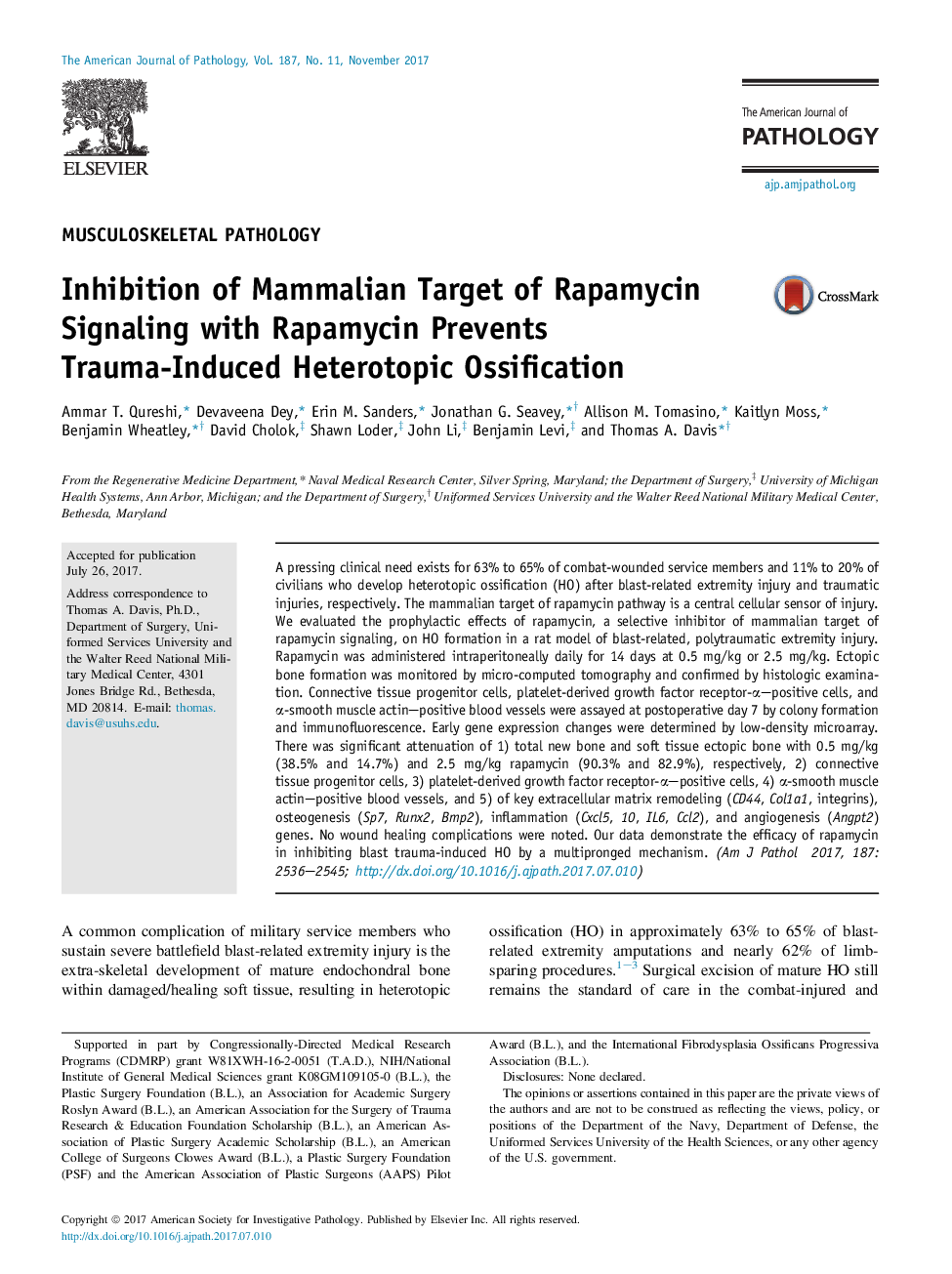| Article ID | Journal | Published Year | Pages | File Type |
|---|---|---|---|---|
| 8652139 | The American Journal of Pathology | 2017 | 10 Pages |
Abstract
A pressing clinical need exists for 63% to 65% of combat-wounded service members and 11% to 20% of civilians who develop heterotopic ossification (HO) after blast-related extremity injury and traumatic injuries, respectively. The mammalian target of rapamycin pathway is a central cellular sensor of injury. We evaluated the prophylactic effects of rapamycin, a selective inhibitor of mammalian target of rapamycin signaling, on HO formation in a rat model of blast-related, polytraumatic extremity injury. Rapamycin was administered intraperitoneally daily for 14 days at 0.5 mg/kg or 2.5 mg/kg. Ectopic bone formation was monitored by micro-computed tomography and confirmed by histologic examination. Connective tissue progenitor cells, platelet-derived growth factor receptor-α-positive cells, and α-smooth muscle actin-positive blood vessels were assayed at postoperative day 7 by colony formation and immunofluorescence. Early gene expression changes were determined by low-density microarray. There was significant attenuation of 1) total new bone and soft tissue ectopic bone with 0.5 mg/kg (38.5% and 14.7%) and 2.5 mg/kg rapamycin (90.3% and 82.9%), respectively, 2) connective tissue progenitor cells, 3) platelet-derived growth factor receptor-α-positive cells, 4) α-smooth muscle actin-positive blood vessels, and 5) of key extracellular matrix remodeling (CD44, Col1a1, integrins), osteogenesis (Sp7, Runx2, Bmp2), inflammation (Cxcl5, 10, IL6, Ccl2), and angiogenesis (Angpt2) genes. No wound healing complications were noted. Our data demonstrate the efficacy of rapamycin in inhibiting blast trauma-induced HO by a multipronged mechanism.
Related Topics
Health Sciences
Medicine and Dentistry
Cardiology and Cardiovascular Medicine
Authors
Ammar T. Qureshi, Devaveena Dey, Erin M. Sanders, Jonathan G. Seavey, Allison M. Tomasino, Kaitlyn Moss, Benjamin Wheatley, David Cholok, Shawn Loder, John Li, Benjamin Levi, Thomas A. Davis,
